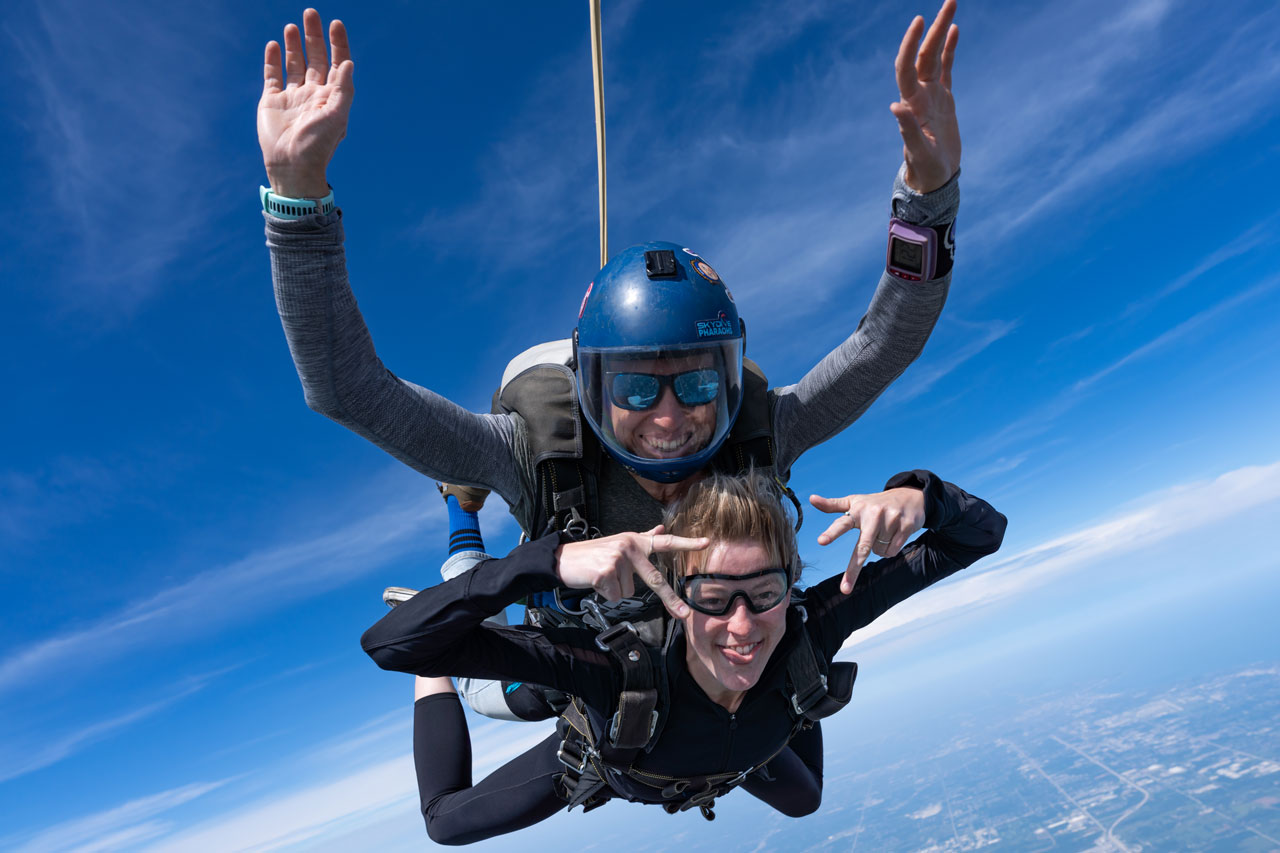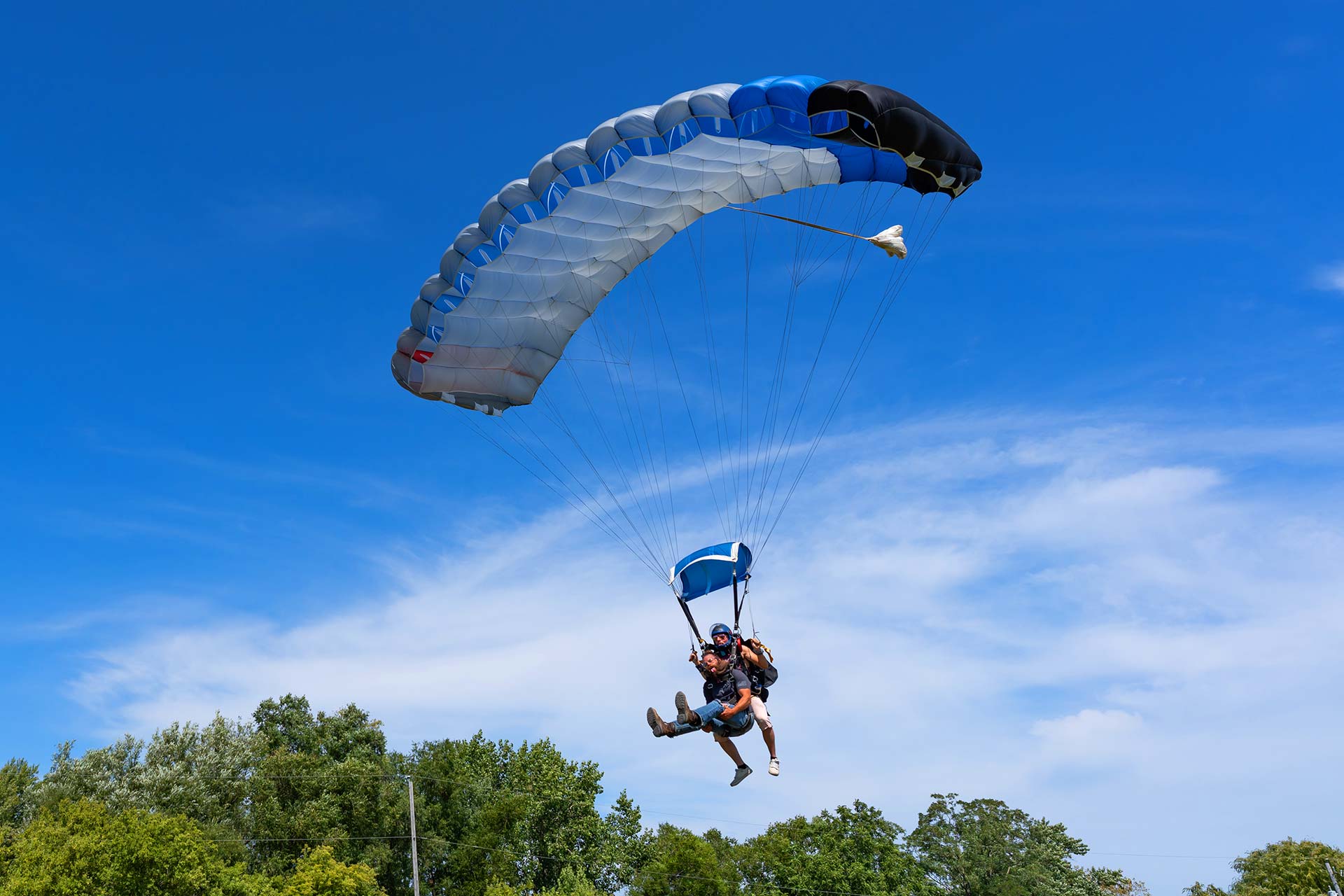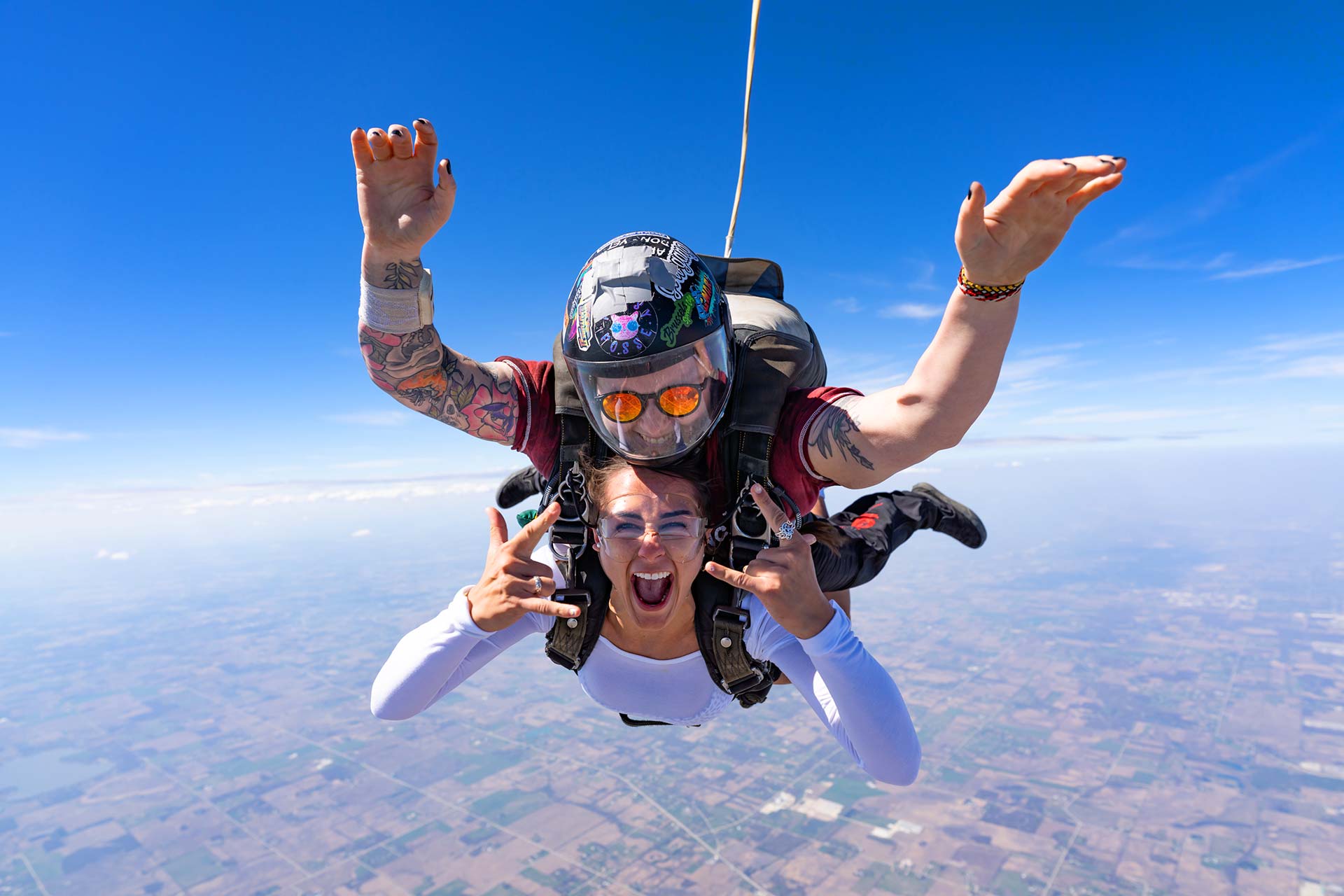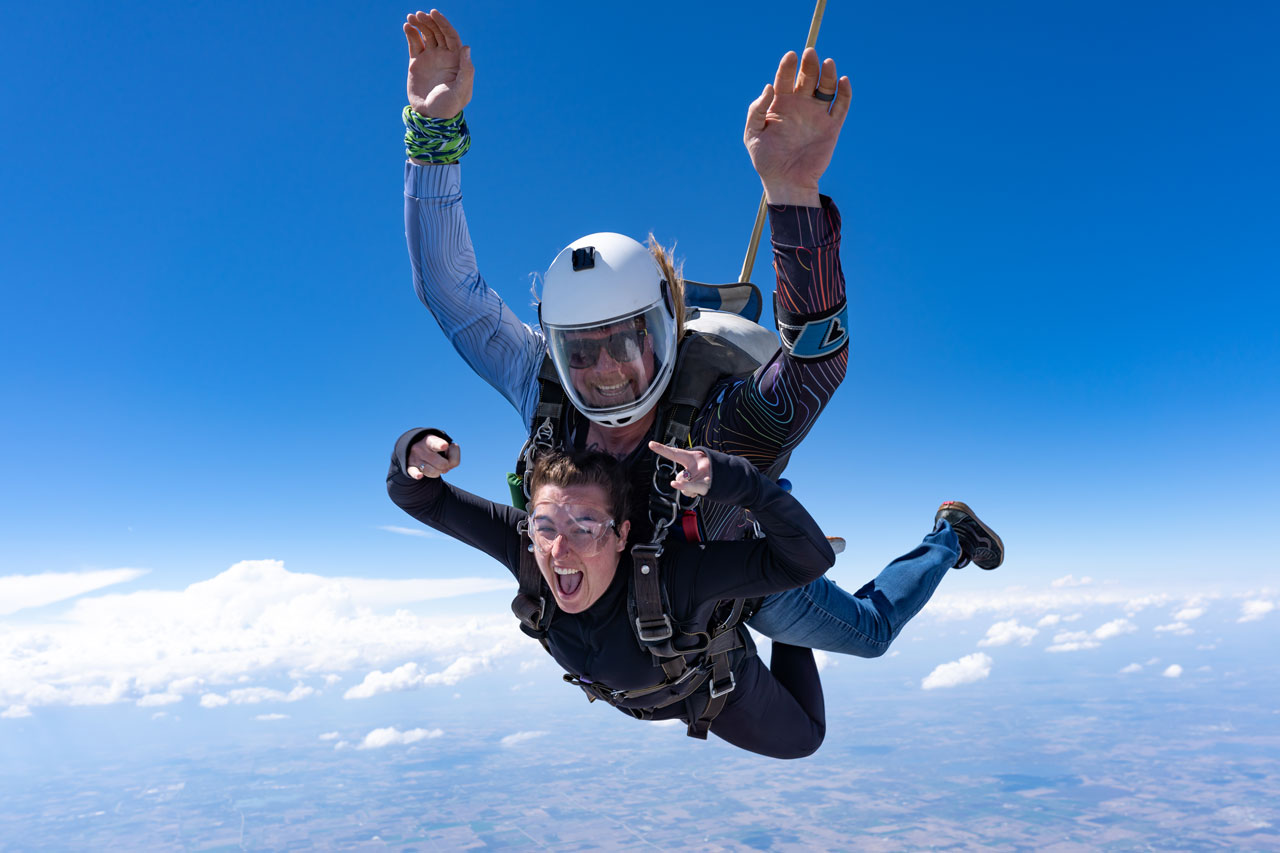Is Skydiving Safe?
Skydiving
Posted by: Go Skydive Nashville
3 months ago
When considering taking on an adventure as monumental as skydiving, safety is naturally the top concern for many prospective jumpers. At Go Skydive Nashville, safety is not just a priority – it’s at the foundation of our operations.
Our dropzone – located just five minutes from the Nashville metro area – delivers an experience that will inspire, enrich, and empower you. That may sound lofty, but it’s true: skydiving is life-affirming. Of course, that’s only if you feel confident and secure throughout the experience. At Go Skydive Nashville, we take care of every last detail so that you feel taken care of throughout every step of your skydiving journey. From the qualifications of our instructors to the maintenance of our equipment, every aspect of our business is grounded in our culture of safety.
While it can be uncomfortable to discuss the risks associated with skydiving, it’s extremely important that everyone involved in a skydive fully understands the risks – and how to mitigate them – in order to stay hypervigilant at all times. So, let’s talk about all things skydiving safety!

How Dangerous is Skydiving?
Skydiving is an extreme sport that comes with inherent risk. You’re jumping out of an airplane and falling towards the ground at speeds upwards of 120 mph, after all! Before embarking on your own skydiving adventure, it’s important for you to be aware of skydiving safety statistics so you can make an informed decision about whether or not the calculated risk is worth the reward.
The United States Parachute Association (USPA) has been keeping record of skydiving injuries and fatalities since the 1960s. Trends in the data inform improvements in safety protocols, skydiving gear, and training requirements for students, instructors, and experienced jumpers.
How Many Skydiving Deaths Per Year?
Before we get into the numbers, it’s important to note that most skydiving-related deaths and injuries are due to human error and not due to equipment failure. Oftentimes, we see an injury or death when an experienced skydiver pushes their limits and makes an unfortunate error in judgment while landing a perfectly functioning parachute.
The USPA recorded 3.65 million jumps made by licensed skydivers in 2023, 10 of which resulted in a fatality. This makes the fatality rate of skydiving 0.27 per 100,000 jumps (1:370,000). This is the lowest recorded number in skydiving history – an achievement marked by devastating loss, but an achievement worth acknowledging nonetheless.
For perspective, let’s look at a few years of data. Again, these numbers reflect licensed skydivers, not tandem skydivers.
| Year | Fatalities | Number of Jumps | Fatalities/100,000 Jumps |
| 2023 | 10 | 3.65 million | 0.27 |
| 2018 | 13 | 3.3 million | 0.39 |
| 2013 | 24 | 3.2 million | 0.75 |
| 2008 | 30 | 2.6 million | 1.15 |

How Safe is Skydiving With an Instructor?
This is an important question with an answer with very different numbers than those above.
Tandem skydiving deaths are rare. In 2023 there were zero tandem skydiving deaths, and over the last decade there has been an average of one fatality per 500,000 jumps. This makes the odds of dying on a tandem skydive about 0.002% for every 1,000 jumps. Does this mean tandem skydiving is safe? We would never say skydiving is safe, but the odds are in your favor.
Solo skydivers have a greater sense of personal responsibility and accountability – they choose what gear to jump with, are charged with its maintenance, and have more privileges in the sky. Tandem skydiving, in contrast, is heavily regulated. Tandem skydivers jump with prescribed gear that is owned and maintained by the dropzone, and they have very limited privileges.
Let’s touch on some of the details surrounding tandem instructor qualifications, tandem gear, equipment maintenance and inspection, weather considerations, emergency preparedness, pre-jump training, and industry compliance.

Tandem Instructor Qualifications
Our tandem instructors at Go Skydive Nashville are highly trained and USPA-certified professionals. Tandem instructors must undergo extensive training and certification before even attempting a tandem skydive with a real student.
To earn their USPA Tandem Instructor (TI) rating, a prospective instructor is required to:
- Have at least 500 jumps
- Have 3 years in the sport
- Hold a USPA D-license (the highest license attainable)
- Have their USPA Coach or Instructor rating
- Have their FAA Class III Flight Medical Certificate
- Participate in continuing education and training regarding safety protocols and skydiving techniques
Tandem Skydiving Gear
Tandem skydiving pairs – meaning you and your instructor – jump with sophisticated gear and technology. Your instructor wears two parachutes, a big, stable main parachute and a reserve parachute. You wear a specially-designed tandem skydiving harness that securely attaches you to your instructor.
Every tandem skydive rig is required to have an Automated Activation Device (AAD). An AAD is a tiny computer that automatically deploys the parachute should the tandem instructor fail to do so manually for any reason. The Reserve Static Line (RSL) automatically opens the reserve parachute container in the event that the tandem instructor cuts away the main parachute.

Equipment Maintenance & Inspection
The skydiving gear at Go Skydive Nashville is meticulously maintained to the highest standard and is regularly inspected for optimal performance. Main parachutes, reserve parachutes, harnesses, and other skydiving gear are subject to stringent checks before each jump. The same goes for our aircraft; every inch is inspected and held to the strict standards set out by the Federal Aviation Administration (FAA).
Weather & Operational Considerations
Skydiving operations are heavily influenced by weather conditions; if it’s not safe to skydive, operations will be postponed. Our team closely monitors weather forecasts and real-time conditions to ensure appropriate jumping conditions on the ground and up at jump altitude. Flights are scheduled only when the weather is favorable for skydiving in order to minimize the risks associated with wind, rain, and clouds.

Emergency Preparedness
Instructors are trained in and frequently practice proper emergency procedures so that they are prepared for any unforeseen circumstances during the skydive. Additionally, our dropzone team is equipped to swiftly respond to an emergency should one occur.
Pre-Jump Briefing
Every tandem skydive begins with a comprehensive pre-jump briefing. Instructors provide detailed instructions on the skydiving process, safety protocols, and what to expect during the jump. This short training session is designed to educate and reassure you, and to give you an opportunity to ask questions and gain clarification. We want you to feel confident and comfortable before taking the leap. Remember: always listen to your instructor.
Industry Compliance
Go Skydive Nashville operates in full compliance with the United States Parachute Association and Federal Aviation Administration regulations. Our dropzone is committed to upholding best practices and to exceeding industry standards. This commitment to excellence ensures that every customer receives a premium skydiving experience.
So, is the risk of tandem skydiving worth the reward? If you’re asking us, then the answer is, of course, a resounding heck yeah! But only you can decide if taking flight is right for you. If you’re ready to spread your wings and soar, book your tandem skydive with Go Skydive Nashville today! Come discover that You Can Fly! Blue skies, y’all.
